Steel warehouse cost per square foot
In the wave of global supply chain restructuring and manufacturing upgrading, steel warehouses have become the preferred choice for logistics centers, industrial plants, and warehousing facilities due to their high strength, scalability, and rapid construction characteristics. However, the core indicator of cost per square foot presents a significant price gradient due to regional differences, design complexity, and functional requirements. This article will combine the latest data from major global markets to break down the constituent elements of steel warehouse cost, analyze regional differences, and provide practical cost optimization strategies for enterprises.
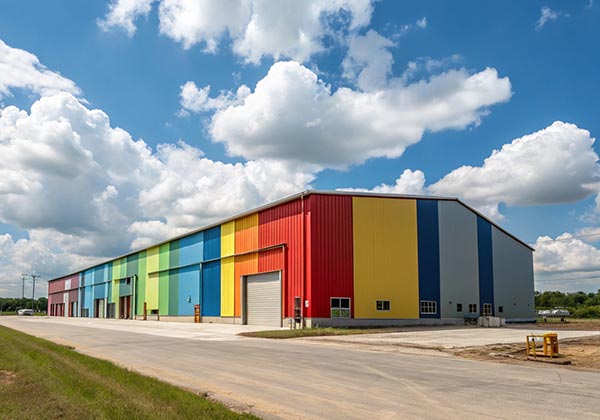
Ⅰ. The core components of steel warehouse cost
The cost of a steel warehouse is not solely determined by the price of steel, but rather encompasses the comprehensive cost of materials, design, construction, and functional systems. Taking the mainstream single-layer single span steel frame and composite panel enclosed warehouse as an example, its cost per square foot (approximately 0.0929 square meters) can be broken down as follows:
| Cost module | Percentage | Core influencing factors |
|---|---|---|
| Steel body | 40%-50% | Unit price of steel (affected by market supply and demand, energy prices), structural design (single span/multi span, load requirements) |
| Enclosure system | 20%-25% | Composite board type (color steel plate/EPS/PU/rock wool core material), galvanized layer thickness, customized doors, windows/ventilation openings |
| Functional system | 15%-20% | Ground treatment (concrete/wear-resistant flooring), electrical system (lighting/circuits), ventilation/fire/cooling equipment |
| Design & construction | 10%-15% | Design fee (standardization/customization), construction period (modular prefabrication can shorten the period and reduce costs), transportation and installation costs |
Note: The above is the global average proportion, and specific regions may fluctuate by ± 5% due to market differences.

Ⅱ. Regional cost comparison
Due to the influence of raw material prices, labor costs, regulatory standards, and market demand, the per square foot of steel warehouse cost in major economies shows significant differences. The following is the latest market data for 2024 (based on Global Market Insights and regional building association reports):
2.1. North America (USA/Canada)
Cost range: $18-$30 per square foot (approximately $170- $300 per square meter).
Core drivers: steel prices, labor costs, environmental compliance (must comply with IBC building codes, fire rating A requirements, and increase the cost of rock wool core materials).
Typical case: A logistics warehouse in the United States (200000 square feet): Main steel $9/square foot, composite panels $4/square foot, functional systems $5/square foot, total cost $18/square foot.
2.2. Europe (Germany/France)
Cost range: € 20- $35/square foot (approximately $215- $375/square meter).
Core drivers: Steel quality (priority use of high-strength steel according to EN 10025-6 standard), low-carbon design (integration of photovoltaic roofs or recycled steel, increasing costs by 10% -15%), Industry 4.0 adaptation (embedded sensor interfaces, increasing upfront design costs by 15%).
Typical case: Bavarian automotive parts warehouse in Germany (150000 square feet): using recycled steel (cost+8%) and rock wool composite board (fire-resistant A1 level), with a total cost of € 28/square foot.
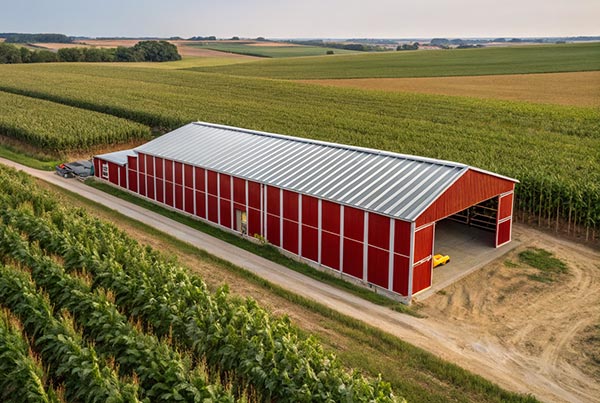
2.3. Asia Pacific (China/India/Vietnam)
China: ¥ 1200-2000/㎡ (≈ ¥ 17-¥ 28/square foot).
Advantages: Steel production capacity ranks first in the world, accounting for 53% of the global total. Local procurement reduces costs, modular construction is mature, and the cycle is shortened to 4-6 weeks.
Typical case: A new energy battery warehouse in Suzhou (100000 square feet): using Baowu Group’s galvanized steel, with a galvanized layer of 275g/㎡ and a cost of ¥ 650/ton, composite panels using EPS (low cost), with a total cost of ¥ 1500/㎡ (≈ ¥ 21/square foot).
India: ₹ 800- ₹ 1500/㎡ (≈ $9.5- $17/square foot).
Challenge: Steel relies on imports, accounting for 30% of demand, and is greatly affected by international price fluctuations. The labor proficiency is low, and the installation efficiency is only 60% of China’s.
Vietnam: $10 to $18 per square foot.
Growth drivers: The transfer of manufacturing industries (such as Samsung and Foxconn expanding warehouses) has driven a surge in demand for standardized steel warehouses, and local manufacturers have reduced costs through large-scale production.
2.4. Middle East (Saudi Arabia/United Arab Emirates)
Cost range: $22- $35/square foot.
Core driver: Extreme weather conditions (40 ℃+in summer) require enhanced insulation, with PU composite panels accounting for over 60%. Wind resistant design, encrypted anchor bolts, cost+12%, anti-corrosion in desert environment, galvanized layer thickness ≥ 350g/㎡.
Typical case: Jeddah Logistics Park warehouse in Saudi Arabia (80000 square feet): PU composite board $7/square foot, wind resistant structure increased by $3/square foot, total cost $25/square foot.
2.5. Latin America (Brazil/Mexico)
Cost range: $15 to $25 per square foot.
Core challenges: High import tariffs on steel (Brazil imposes a 12% tariff on imported steel), infrastructure restrictions (transportation costs account for up to 10%), but local manufacturing investment waves (such as Tesla’s Mexico factory) are driving demand growth.
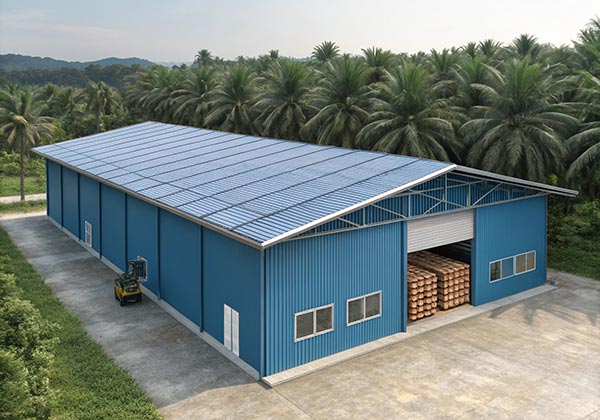
Ⅲ. Key variables affecting cost
In addition to regional differences, the per square foot of steel warehouse cost is also affected by the following variables, and companies need to balance cost and functionality based on demand:
3.1. Structural complexity: single span vs multi span vs large-span
- Single span warehouse (span ≤ 24 meters): No middle columns, high space utilization, lowest cost, accounting for approximately $18- $25/square foot.
- Multi span warehouse (2-4 spans): Additional support columns are required to reduce the usable area, resulting in a cost increase of 10% -15%.
- Large span warehouse (>36 meters): adopts truss or grid structure, increases steel consumption by 20%, but saves column costs, with a comprehensive cost close to multi span, $22- $30/square foot.
3.2. Functional requirements: Storage vs Production vs Cold Chain
- Basic storage (tool/goods storage): Only the basic ground (concrete hardening) and lighting are required, accounting for 15% of the total cost
- Light production workshop (equipment storage+simple processing): requires reinforced ground (load-bearing ≥ 500kg/㎡), explosion-proof circuit (cost+8%), ventilation and dust removal (+12%)
- Cold chain storage (below 0 ℃): requires installation of insulation layer (XPS extruded board, $4/square foot) and refrigeration unit ($6/square foot), with a total cost of $30- $40/square foot.
3.3. Material specifications
- Economy type: Color steel plate+EPS core material, low cost, $12- $18/square foot, but short lifespan (15-20 years).
- High end type: rock wool composite board+hot-dip galvanized steel, with a lifespan of over 25 years and a cost increase of 20% -30% ($22- $35/square foot).
3.4. Market fluctuations
Steel accounts for 40% -50% of the total cost of steel warehouses, and its price is significantly affected by iron ore prices (accounting for 60% of steelmaking costs), energy prices (coke/natural gas), and international trade policies (such as US Section 232 tariffs). For example:
- In 2022, global iron ore prices rose by 30%, driving the price of hot-rolled steel plates from $700/ton to $950/ton, resulting in a short-term increase of 8% -10% in steel warehouse cost.
- The 2024 Red Sea shipping crisis has pushed up the cost of European steel imports (with transportation fees increasing by $20/ton), and the cost of German steel warehouses has risen by 5% compared to the previous period.
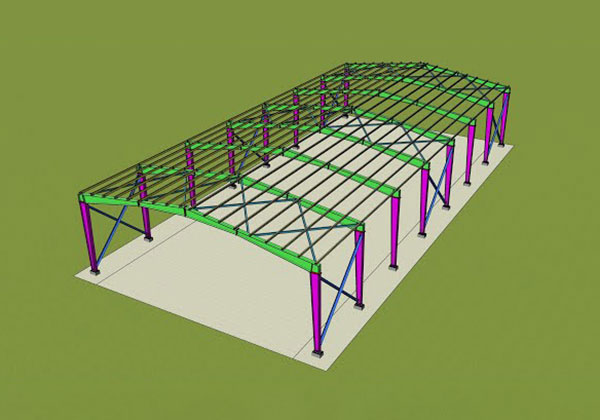
Ⅳ. Cost optimization strategy
Faced with cost differences and fluctuations in the global market, companies can reduce their cost per square foot through the following strategies:
4.1. Prioritize standardized design
Choose modular and universal steel warehouse solutions (such as single span, standard span, conventional load) to avoid excessive customization. For example, a logistics company in the United States reduced the design fee from $8 per square foot to $3 per square foot by adopting a 30 meter x 60 meter standard module.
4.2. Localized procurement and production
In emerging markets such as Vietnam and India, prioritize local steel suppliers to reduce import tariffs and transportation costs. In Europe, the use of recycled steel meets EU carbon tariff requirements and reduces costs by 5% -8%.
4.3. Configure functional systems as needed
Basic storage scenario: Remove unnecessary insulation layers, such as non cold chain warehouses in tropical regions that do not require rock wool core materials.
Industrial grade scenario: Pre embedded sensor interfaces, and the cost of installing intelligent systems in the later stage is only one-third of the reserved cost in the early stage.
4.4. Seize the market window period
Steel prices fluctuate periodically (usually every 3-5 years), and companies can lock in steel prices through futures contracts. The futures price of hot-rolled steel plates in Q3 2024 is $820/ton, which is 7% lower than the spot price. Or choose to purchase during the off-season, as the demand for steel in the northern hemisphere during winter is low and prices decrease by 5% -10%.
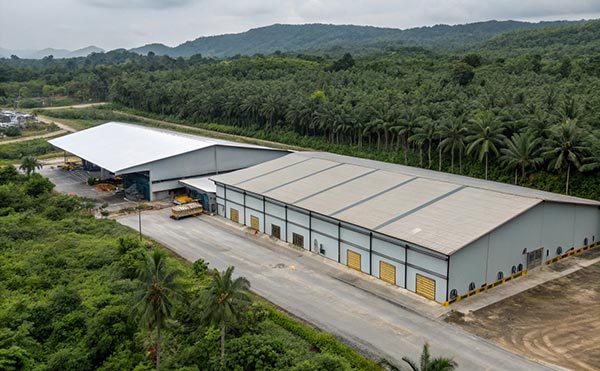
Conclusion
The cost per square foot of a steel warehouse is essentially the art of balancing demand, cost, and efficiency. Global users need to be clear: high cost does not necessarily mean high value. In high temperature and rainy Southeast Asia, choosing steel components with thicker galvanized layers (increasing by $2/square foot) may save maintenance costs in the later stage compared to low-cost solutions (reducing by $305/square foot within 5 years) and meet EU carbon tariff requirements, avoiding the risk of export restrictions.
Ultimately, the value of a steel warehouse lies not only in its price per square foot, but also in its ability to support the company’s long-term strategy. Is it a rapidly expanding space engine or a green infrastructure to address climate change? Only by understanding this can we make the most suitable cost decisions in the global market.
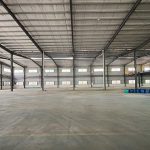
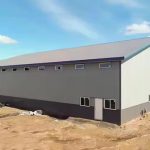
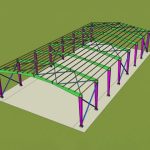
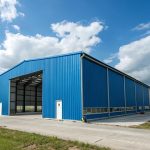
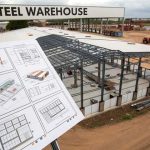
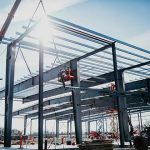

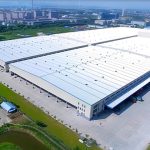
Send us the inquiry form